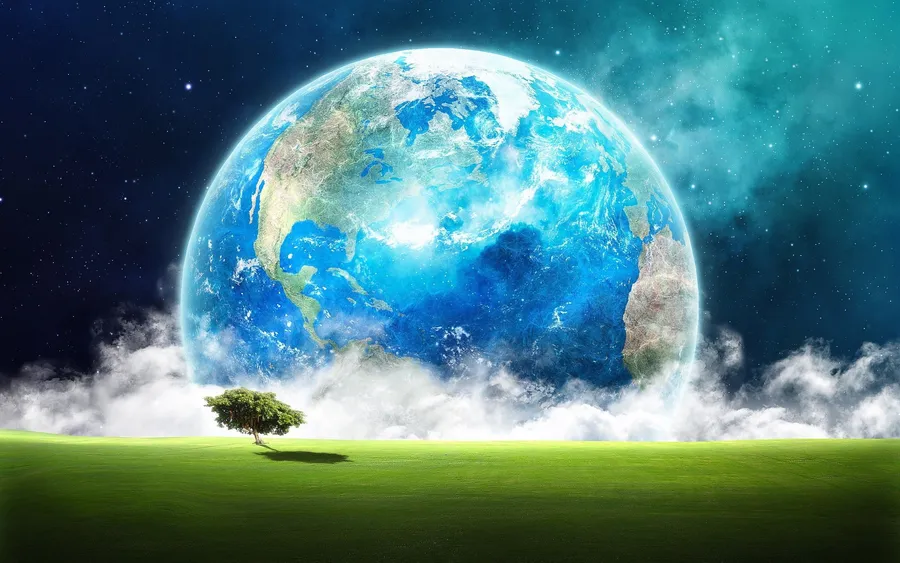As Earth Day 2025 approaches, marking 55 years of global environmental awareness, the planet faces unprecedented challenges. Record-breaking temperatures, accelerating climate disasters, and ecological strain dominate headlines, yet glimmers of resilience and adaptation offer hope. Below is an analysis of the current state of Earth, synthesized from recent climate data and environmental trends.
Climate Crisis: The New Normal.
2024 cemented its place as the warmest year on record, with global temperatures reaching 1.60°C above pre-industrial levels—the first calendar year to exceed the 1.5°C threshold. This milestone follows a decade of relentless warming, with each year since 2015 ranking among the ten hottest ever recorded..
- February 2025 saw a global average of 1.49°C above pre-industrial levels, the third warmest February on record. Despite a weak La Niña event (which typically cools temperatures), this marked the second monthly average below 1.5°C in 20 months.
- January 2025 shattered records as the warmest January globally, with temperatures hitting 1.75°C above pre-industrial levels. Arctic sea ice extent was the joint lowest on record, underscoring polar amplification of warming.
ENSO Dynamics
La Niña conditions, which emerged in December 2024, are weakening and may transition to neutral or El Niño states by mid-2025. While La Niña historically cools global temperatures, its fading influence could amplify warming later this year. Current forecasts suggest a 38% chance that 2025 will surpass 2024 as the warmest year, driven by lingering heat retention and potential El Niño resurgence.
Extreme Weather and Ecological Impacts
The consequences of warming are stark:
- Heatwaves: Over 80% of the global population experienced climate-driven heat in July 2023, with one-quarter facing dangerous extremes.
- Ice Loss: Antarctic ice sheet melt accelerated by 75% between 2011–2020 compared to the prior decade. Arctic heating occurs four times faster than the global average.
- Wildfires and Droughts: A 9-fold increase in large North American wildfires since 1980, alongside record megadroughts in regions like the American Southwest.
Greenhouse Gas Emissions and Feedback Loops
Human activities remain the primary driver of warming:
- Emissions: Global greenhouse gas emissions hit 54 ± 5.3 GtCO₂e over the past decade, with 2023 alone seeing a 1.1% increase.
- Aerosol Decline: Reduced aerosol cooling (from pollution controls) has accelerated warming rates to over 0.2°C per decade.
The Paradox of Global Greening
While deforestation and habitat loss persist, satellite data reveals increased vegetation cover—a phenomenon dubbed “global greening”. Causes include:
- CO₂ Fertilization: Rising atmospheric carbon dioxide enhances plant growth in some regions.
- Agriculture and Reforestation: Expanded croplands and tree-planting efforts.
However, this trend masks risks: greening in arid regions may exacerbate water scarcity, and pollution-driven growth (e.g., nitrogen fertilizers) undermines biodiversity.
Biodiversity and Human Health
- Extinction Risks: Animal and plant extinctions are projected to rise 2–5-fold by mid-century.
- Public Health: Climate disasters like wildfires and floods (e.g., January 2025’s deadly rains in Brazil and Indonesia) strain healthcare systems and air quality.
Looking Ahead: Challenges and Opportunities.
2025 Projections
- Temperature Outlook: A 45% chance that 2025 will rank second warmest, with La Niña’s decline potentially unlocking record-breaking heat.
- ENSO Transition: Neutral conditions are likely by May, but a 20% chance of El Niño by year-end could amplify warming.
Solutions and Adaptation
While the Paris Agreement’s 1.5°C target remains technically achievable, immediate action is critical. Innovations in renewable energy, carbon capture, and climate-resilient agriculture are urgent priorities. Earth Day 2025’s theme—“Our Power, Our Planet”—emphasizes collective responsibility.
Conclusion.
Earth in 2025 is a planet of contrasts: warming relentlessly yet showing fleeting signs of ecological resilience. The window for mitigation is narrowing, but global cooperation and technological leaps could still steer humanity toward a livable future. As temperatures rise, so must our resolve to act.

